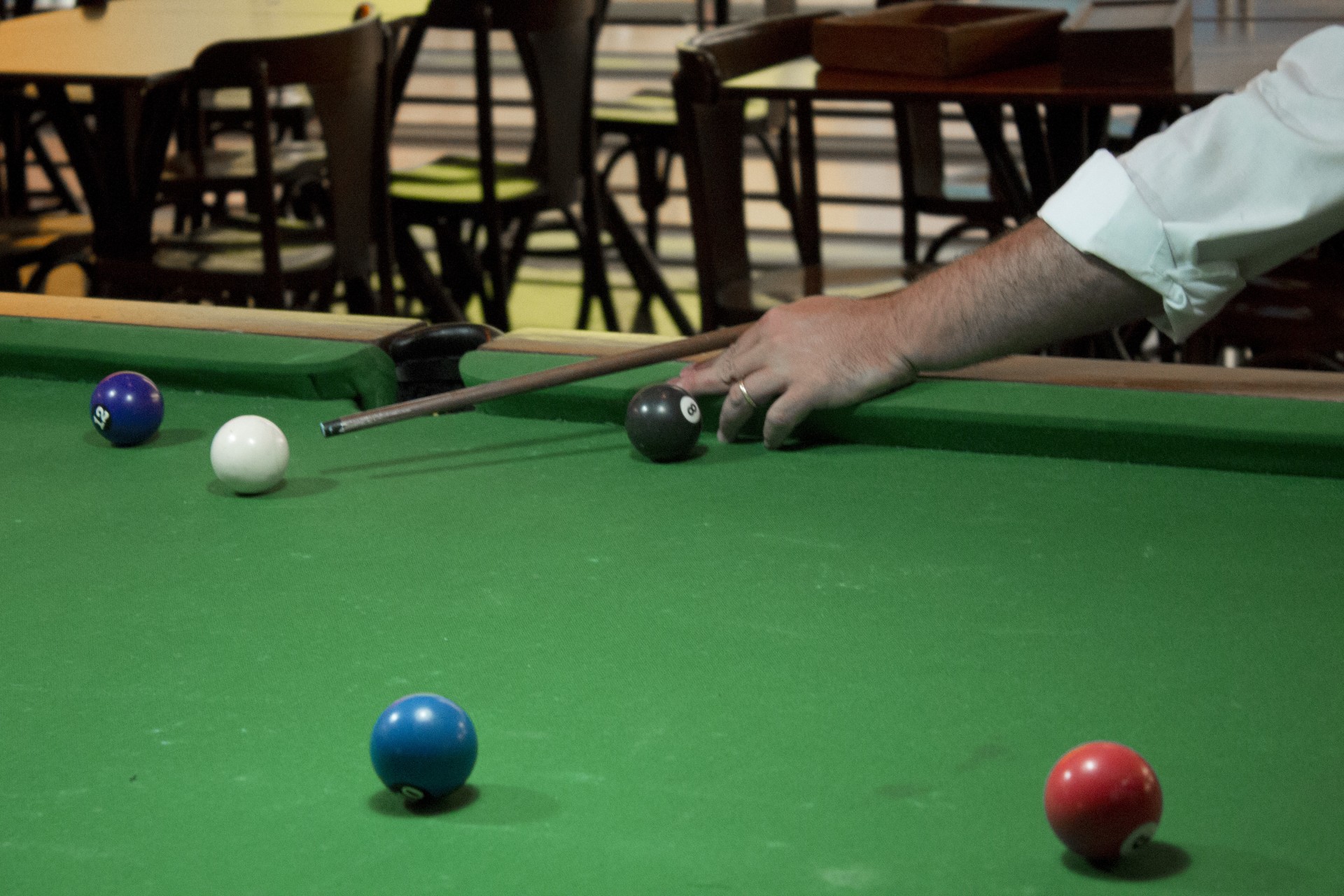If You Want To Be A Winner, Change Your What Is Billiards Philosophy N…
페이지 정보
작성자 Fred 댓글 0건 조회 16회 작성일 24-06-30 21:53본문
The other principal games are played on tables that have six pockets, one at each corner and one in each of the long sides; these games include English billiards, played with three balls; snooker, played with 21 balls and a cue ball; and pocket billiards, or pool, played with 15 balls and a cue ball. The traditional mahogany billiards table is still in use, but tables are now generally made of other woods and synthetic materials. The game of English billiards is most popular in Britain and the former empire countries. Chalk in small cubes is applied uniformly to the cue tip permitting the players to strike the cue ball off centre on purpose in order to impart a spinning motion, called "side" in Great Britain and "English" in the United States. There are three ways of scoring: (1) the losing hazard, or loser, is a stroke in which the striker’s cue ball is pocketed after contact with another ball; (2) the winning hazard, or pot, is a stroke in which a ball other than the striker’s cue ball is pocketed after contact with another ball; (3) the cannon, or carom, is a scoring sequence in which the striker’s cue ball contacts the two other balls successively or simultaneously.
The skill involved consists of developing one scoring stroke after another. The shot clock will end when the cue tip strikes the cue ball to initiate a stroke or the when player’s time expires from the shot clock. Some versions only allow players to place the ball behind the line on the table, often called the head line or baulk line. Another popular misconception about Billiards is that players automatically lose if they scratch on the 8 Ball. There are numerous varieties of each game-particularly of carom and pocket billiards. This means that you will have to hit the cue ball into a pocket while hitting the 8 Ball in at the same time to lose. A miscue occurs when the cue tip slides off the cue ball possibly due to a contact that is too eccentric or to insufficient chalk on the tip. Nine ball is played with nine object balls numbered one through nine and the cue ball. The small end of the cue, with which the ball is struck, is fitted with a plastic, fibre, or ivory reinforcement to which is cemented a leather cue tip.

In a variety of the game called three-cushion billiards, the cue ball must also touch a cushion or cushions three or more times to complete a carom. One of the white balls (plain or spot) serves as the cue ball for each player, the red ball and other white ball serving as his object balls. The object balls are racked as tightly as possible in a diamond shape, with the one ball at the apex of the diamond and on the foot spot and the nine ball in the middle of the diamond. What happens if I scratch on the 8 Ball? It is a common misconception that players automatically lose if they scratch on the break. Another penalty often enforced when players commit a scratch is that they must take one of their own balls and place it back onto the table. As the site develops, what is billiards features such as "Top 50 Players" and "MetroPool" will be reintegrated into the site.
Normally, the balls will be played from the position left by the mistaken play. You play against another individual or team. The magazine's content includes some of the best instructional columns anywhere (with such high-caliber names as pool legends Mike Sigel and Nick Varner), professional and amateur coverage, industry news, personality profiles, billiards history and culture, and much more, including many unusual, innovative and highly informative billiard articles found in no other publication of any kind. From 1938 to 1977, the magazine's title had changed to Bowlers Journal and Billiard Revue; at the time, these two sports industries were very similar and overlapping, and could be covered in the same periodical. The parent publishing comapny of Billiards Digest, Luby Publising was started in 1913 by Dave Luby with the magazine Bowlers Journal, a title that remains in strong circulation today. Mort Luby Jr., the grandson of Dave Luby, decided the sport of billiards needed its own magazine, and debuted the first issue of Billiards Digest 65 years after the premier of Bowlers Journal. Submissions can be mailed to Billiards Digest, 122 S. Michigan Ave. Suite 1506, Chicago IL 60603, or emailed to the editor by clicking here.
댓글목록
등록된 댓글이 없습니다.